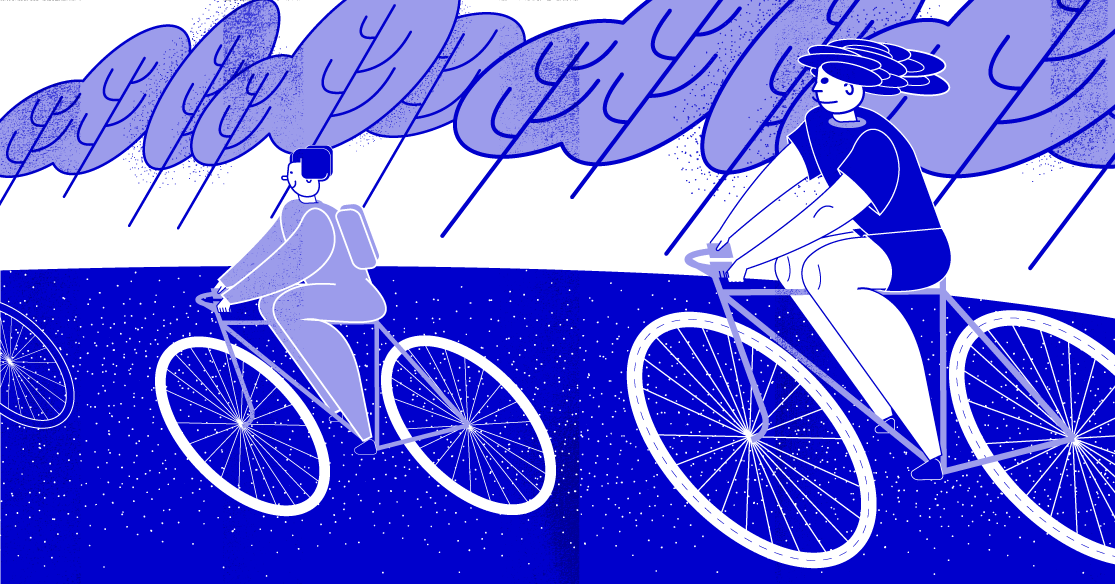Cycling with diabetes like a pro
There is no winning solution that works for everyone – the only way to discover the best routine for you is to spot your health patterns and tailor your therapy and behavior to them. The more you know about your body and how it reacts to activity, medication, meals, etc. the more control over your condition you will have and the more satisfying your daily life will be. xbird helps you understand the patterns of your activity and health by tracking different activities such as cycling. Cycling is an important activity for many people living in the city and in rural areas as well.
Why ride a bike
Cycling, to put it simply, is good for you! Some people living with diabetes don’t experience any discomfort when cycling if they know how their body reacts and are aware of their hypo symptoms. Not only is it a nice activity, especially if outdoors, but it also works your muscles, helps increase lung capacity, and is good cardio. If done regularly and with a proper attitude, it helps to improve the body’s response to insulin and lower blood glucose levels.
Checking your glucose level is essential
As with every intense activity, cycling requires a sufficient amount of blood sugar to provide energy. The longer you cycle the faster your blood glucose level drops. Health consultants usually advise consuming little amounts of sugar throughout a longer ride to avoid the accompanying drop in blood glucose; however, if cycling long distances frequent blood testing is needed to ensure the situation is under control. It may sound complicated and disturbing from the process, but it shouldn’t make an impression of an activity to avoid. Professional cyclists living with diabetes advise people to check their blood glucose before, during, and after cycling. For short cycling distances like getting to work or studies, it is recommended to check your glucose level before and after and you can discuss it with your healthcare provider should you have any cause for concern.
Be aware
To manage your cycling activity and be confident in your health, you should listen to your body and understand how it reacts. It’s a common thing that sometimes exercising can lead to elevated blood glucose. If you train too hard, your body may start reacting to this stress and release glycogen and stress hormones. Another case that may lead to a higher glucose level is if you are using injections. In the middle of exercising your blood glucose can drop and that means that you’d have to inject glucose and since your metabolism is faster during the activity you’ll need a higher dosage. As soon as you finish exercising your body will no longer need that extra glucose you injected and you end up with a higher level in your blood. Slow cooling down after training and awareness can solve this problem and minimize the possibility.
Stay hydrated
Professional cyclists say that sometimes their glucose goes up and sometimes it drops, so they always have some snacks on them and stay hydrated. “Stay hydrated” is actually a mantra for every person whether he or she has diabetes or not. However, for people living with diabetes, it is essential. You should also pay attention to the weather because if it’s hot you need to focus on your hydration more and watch your glucose more precisely.
As for almost every activity, the best approach is to discuss everything with HCP, ask any questions without hesitation and listen to your body. This is how you learn to understand your body and create the approach that suits you and only you. xbird helps to track the correlation of patients’ activities with their body’s reaction so that the therapy can be adjusted and customized.
All the suggestions in this article are presented for general information and should not be perceived as a medical advice. You should always consult your healthcare professional when making any changes in your activity, medication, or diet.
References:
Ian W Gallen. Cycling for people with type 1 diabetes, 2013
K J Guelfi 1, N Ratnam, G A Smythe, T W Jones, P A Fournier. Effect of intermittent high-intensity compared with continuous moderate exercise on glucose production and utilization in individuals with type 1 diabetes. 2007
This project is co-financed via the European Regional Development Fund (ERDF)

